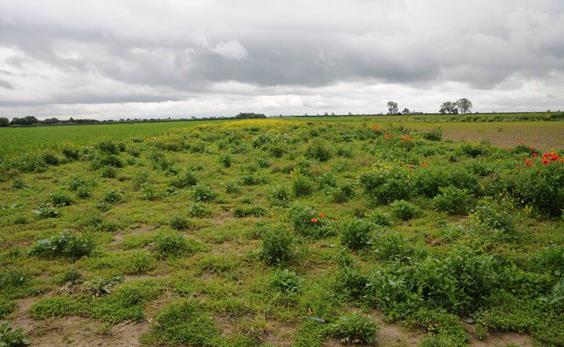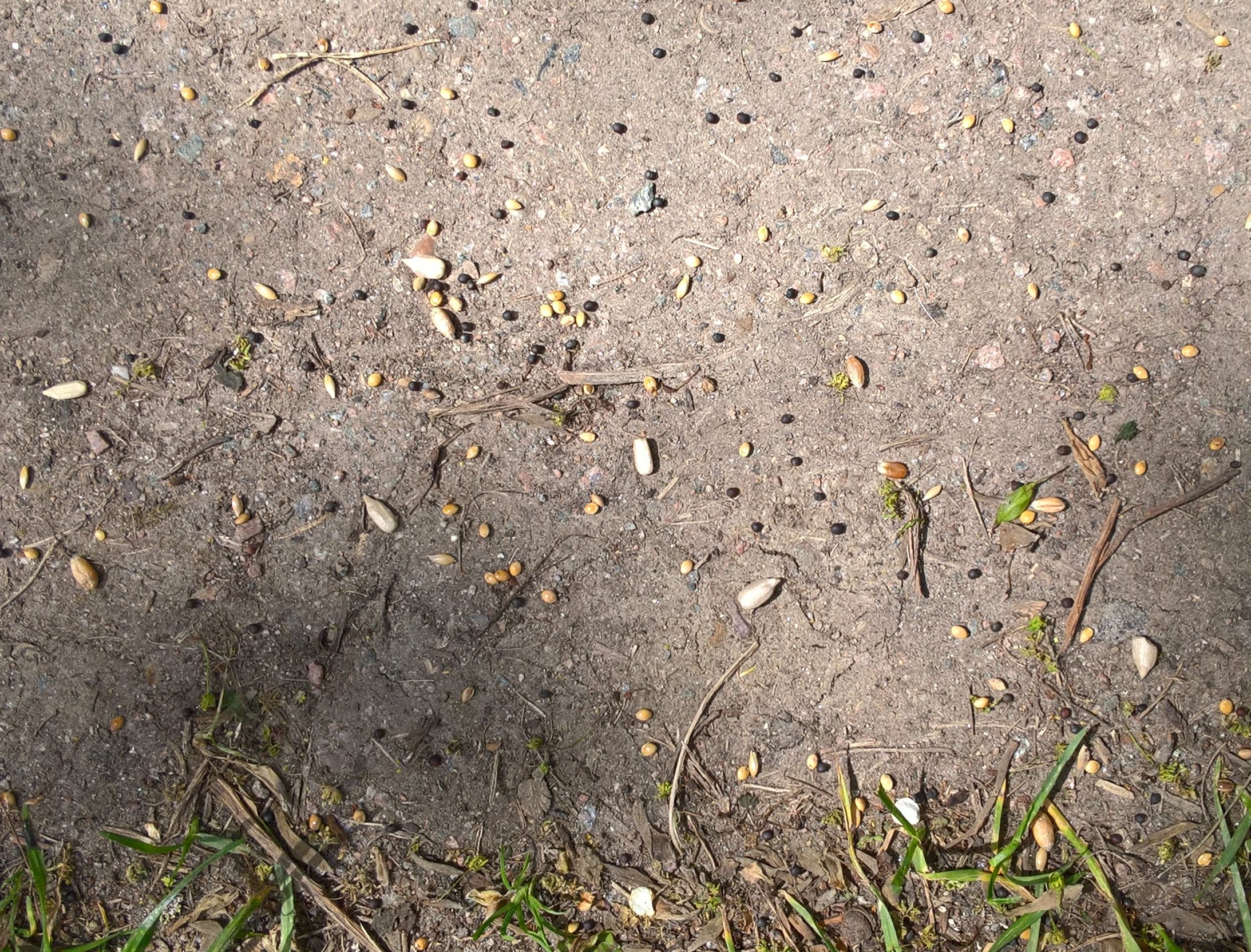This information is also available as a downloadable PDF from the following link: Supplementary feeding of Turtle Doves PDF.
Why is supplementary feeding important?
Research has shown that a loss of suitable and accessible seed food has been the most significant factor in driving the decline of Turtle Doves in the UK. A lack of seed food in the wider countryside has affected both adult and young Turtle Doves. Evidence shows that where birds have access to suitable seed food, this has a positive impact on adult and chick body condition and higher survival of young immediately after leaving the nest.
Plants that produce suitable seeds for Turtle Doves can be encouraged using a variety of measures (see Create Turtle Dove Habitat). However, in some situations this can be challenging, particularly early in the breeding season. For this reason, and due to the current challenges this bird faces in the UK, we recommend supplementary feeding as a helpful emergency conservation measure in all areas where Turtle Doves still breed.
Providing supplementary food for Turtle Doves when they return to the breeding areas in spring will help to ensure adult birds are able to get into good breeding condition and will help to bridge the gap when native wildflower seed is scarce. Supplementary feeding can be an important stop-gap measure to support the longer term aim of providing forage areas of native wild arable plants. Research has shown that native arable plant seeds provide the best nutritional value for growing Turtle Dove chicks.
Supplementary feeding trials for Turtle Doves showed that feeding using the methods and protocol described here is effective and safe, with no evidence of increased risk of disease transmission between birds. Therefore, Operation Turtle Dove recommends that the protocol described here is followed closely to maintain this effectiveness and safety.
Other seed-eating bird species of conservation concern may also benefit from supplementary feeding, possibilities including: Grey Partridge, Skylark, Linnet, Bullfinch, Yellowhammer and Reed Bunting.

areas of bare ground.
What supplementary seed to use?
Operation Turtle Dove only recommends feeding with a mix of suitable seed types, not just a single seed, to provide better nutritional variety. Suitable seed types that Turtle Doves are known to use include: oil seed rape, feed white millet, feed red millet, canary seed, sunflower hearts or other oil-rich seeds of similar size.
The exact mix can vary, for example due to annual variation in crop availability and pricing but, as a minimum we recommend that any supplementary seed mix for Turtle Doves should contain at least three seed types, with no more that 10% wheat in any mix, and at least 10% of any other single component. This should ensure a minimum nutritional balance and quality. Each feeding site will require at least 75kg of the seed mix each year. This will be enough to enable weekly deployment of the supplementary feed for 12 weeks.
Location and management of feed areas
Supplementary food should be located within 300m of known Turtle Dove nest sites, or good nesting habitat – e.g. tall thick hedges or areas of dense thorny scrub. The feeding site must be a bare surface free of vegetation or have vegetation that is short (less than 15cm) and patchy, including at least 30% (preferably 50-60%) bare areas. Farm tracks and hard-standing are often suitable. If the vegetation grows to cover the ground and becomes taller than 15cm before late June, it should be cut back or rotovated.
If for any reason the original feeding site cannot be maintained throughout the breeding season, e.g. because the vegetation becomes too overgrown or there is a build-up of uneaten seed, then the feeding area should be moved as short a distance as possible to a location that is suitable. Suitable supplementary feeding sites could include stubbles, other fallow or recently established or cultivated areas (including fallow or seed plots), bare or sparsely vegetated tracks, hard standing, very short grass etc. Avoid areas of existing botanical interest. An ideal feeding area is a strip 50m long by 5m wide.
Feeding stations should be in an open location, and not under tree canopy. On farmland they can be located either in-field or adjacent to field boundaries. Maintaining the supplementary feeding site in the same location through a breeding season is the preferred method.

Example areas for supplementary feeding
When, and how much to feed
Supplementary feeding for Turtle Doves should be carried out from at least the first week of May to the end of July. Starting earlier (mid-April) and continuing later (up to end of August) can also be beneficial and is recommended wherever possible. Seed should be put out each week; spun or scattered to spread it thinly and evenly across the whole feeding site, to avoid creating piles or trails of seed. 6kg of seed per week over a 50m x 5m feeding site is the recommended rate.
This low rate of seed delivery has been tested and found to be effective in minimising disease risk. If you want to provide more seed then the best option is to establish multiple plots and retain the same seed rate, or enlarge the existing plot. Do not add more seed to the existing plot. If there is a visible build-up of unused food, stop feeding for at least one week to reduce disease risk. If seed build-up continues, consider using an alternative site.
- The seed mix should be broadcast over a wide area, to reduce the risk of disease
Other considerations
Supplementary feeding for Turtle Doves can be paid for as part of a Countryside Stewardship agreement (SP9 Species Supplement). Talk to your local Operation Turtle Dove or Natural England advisor for more details.
If you are in an agri-environment scheme and the area you wish to feed on is within a scheme option you may need to seek permission from Natural England. You may also need advice if you are in a SSSI or area of importance for arable plants. Contact your local Natural England Advisor for more information.
Other seed-eating birds of conservation interest such as Linnet, Tree Sparrow, House Sparrow, Reed Bunting, Corn Bunting and Yellowhammer have been found to be more abundant on fed plots. The presence of other birds should not prevent use by Turtle Doves, and indeed may alert Turtle Doves to the presence of the seed. Trail cameras can be a good way of monitoring what is using your feeding sites.
If you are made aware of an avian flu outbreak at nearby premises make sure that your feeding area is at least 500m from the infected site. If you find dead birds in a feeding area, stop feeding immediately and report to Defra. If any dead birds are found on a feeding site (and they have not been shot) then the feeding site should be moved immediately, so there is no overlap with the original feeding area. Then contact your local Turtle Dove advisor.
Download the Supplementary feeding of Turtle Doves PDF.





